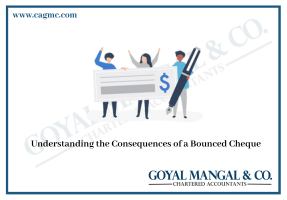 A bond is a financial instrument that allows you to borrow money. It’s similar to a promissory note. A bond can be launched or issued by the government of a country or by a company to raise cash. Government bonds (also known as G-secs in India, Treasury in the United States, and Gilts in the United Kingdom) are one of the safest investments since they are backed by the sovereign. Bond is fixed income instruments.
A bond is a financial instrument that allows you to borrow money. It’s similar to a promissory note. A bond can be launched or issued by the government of a country or by a company to raise cash. Government bonds (also known as G-secs in India, Treasury in the United States, and Gilts in the United Kingdom) are one of the safest investments since they are backed by the sovereign. Bond is fixed income instruments.
This article briefly describes What Are Bonds and the Different Types of Bonds, and also explains the Categories of Bonds of Maturity.
|
Table Of Contents |
Introduction
A bond is debt security, Borrowers issue bonds to raise money from investors for a certain amount of time. Borrowers issue bonds to raise money from investors willing to lend them money for a certain amount of time. Bonds are issued by the center & state governments, corporate, Banks, and Financial institutions. When you buy a bond, in return the issuers promise to pay a specific rate of coupon during the life of the bond and repay the principal amount. As a result, they also provide the lowest investment returns (or yield). Corporate bond investments are riskier since the odds of failure is higher.
Categories of Bonds of Maturity
Depending on the duration, a bond can be classified as:
- Short Term Bond (Up to 5 Years),
- Medium-Term Bond (5-15 Years),
- Long-Term Bond (Over 15 Years).
Different types of Bonds
- Fixed Coupon Rate Bonds: In these types of bonds, the interest is fixed from the date of issue. Most corporate and government bonds are of fixed coupon rate and the interest or coupon is provided annually, semi-annually, quarterly or monthly till the redemption date.
- Floating Coupon Rate Bonds: In these bonds, the coupon rate fluctuates at a predefined time till the date of maturity. Here interest rate depends on a benchmark that it follows to determine the coupon rate in each coupon payment. In the case of FRB Bonds, the coupon rate depends on the Treasury bills (T-Bills) yield.
- Zero-Coupon Bonds: These bonds are those bonds where the issuer does not provide any coupon payment to the holder till the maturity date. Here the bonds are issued below the face value amount and on the date of redemption or maturity.
- Cumulative Coupon Rate Bonds: These bonds are issued with a coupon rate but the coupon payment is done at the time of redemption. Usually, corporations issue these types of bonds.
- Inflation-Indexed Bonds: These bonds provide protection from inflation. It is primarily issued by the government. Here the coupon rate is dependent on the inflation rate.
- RBI Bonds (The Floating Rate Saving Bonds) 2020: The RBI’s Floating Rate Savings Bonds 2020 are government-issued bonds with a 7.15 percent interest rate. The Bonds have a variable interest rate that is reset every six months, with the first reset scheduled for January 1, 2021.
What are Bond Yields?
The predicted profits created and realized on a fixed-income investment over a given period of time, expressed as a percentage or interest rate, is referred to as the yield on a bond. The return on a bond is referred to as the bond yield. Bond yields can be defined in a variety of ways. The simplest definition is to set the bond yield equal to the coupon rate. If the bond’s price differs from its face value, the current yield is a function of the bond’s price and its coupon or interest payment, and it will be more accurate than the coupon yield.
Conclusion
Bonds are often regarded as one of the safest investment options available. The varied yields on a bond may tell you a lot about how risky the investment is and what kind of returns you might expect. Bonds with a maturity period of 7 to 10 years are called “Notes”.The Bonds can be categorized into four variants: Corporate Bonds, Municipal Bonds, Government Bonds, and Agency Bonds. The Bond prices are inversely proportional to the Coupon Rate. When the rate of interest increases the bond prices decrease and the rate of interest decreases, the bond price increases. The amount which the investor is liable to get after the maturity of the bond is called its Face Value. A bond is generally a form of debt that the investors pay to the issuers for a defined time frame. In layman’s language, bondholders offer credit to the company issuing the bond. Bonds generally have a fixed maturity date. All bonds repay the principal amount after the maturity date however some bonds do pay the interest along with the principal to the bondholders.







